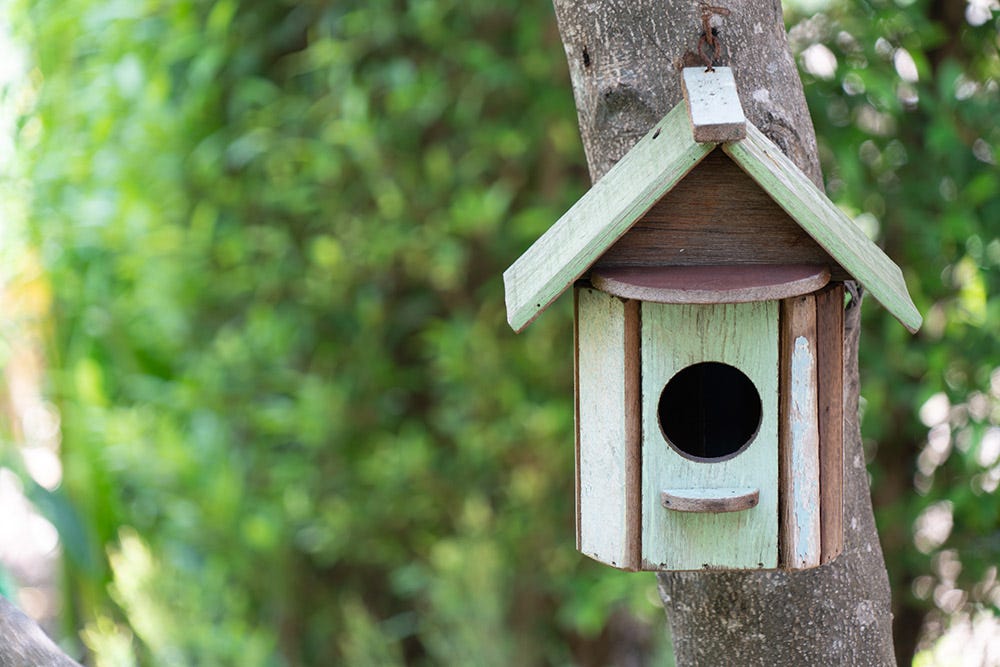
Winter
During the winter months, garden birds focus their energies on survival. As they contend with rain, frost and snow, getting enough calories can be difficult. Foraging time is restricted by shorter days, so providing them with easy-to-reach nutrients can literally be a lifesaver.
Provide:
-
Sunflower seeds
-
Sunflower hearts
-
Fat balls
-
Suet treats
-
Grated cheese
-
Crumbled pastry
These all have a high calorie content that will help sustain birds through the colder months.
Avoid:
-
Cooking fat – this can get smeared onto feathers, destroying vital waterproofing and insulating properties.
-
Salted nuts – garden birds are unable to metabolise salt.
Spring
Most naturally foraged seeds and berries will already have been eaten during the winter, so it's important to provide birds with extra sustenance through spring. Garden birds need to be in peak condition for breeding, so your contributions will support two generations.
Provide:
-
Sunflower seeds
-
Suet treats
-
Oyster shell grit – provides essential calcium for both female and male birds, while also helping the females to form their eggs.
Avoid:
-
Peanuts – they can pose a risk to baby birds.
Summer
Some species of garden birds can have up to four broods, so the summer months are a busy time for feeding multiple mouths. Most birds will be seeking natural food such as insects, snails, slugs, worms and caterpillars, so adjust how much you put out depending on demand.
Provide:
-
Live or rehydrated mealworms – these provide chicks with essential moisture
-
Sunflower hearts
-
Raisins
-
Sultanas
-
Apples pieces
-
Pear pieces
Avoid:
-
Fat-based foods – they can breed bacteria in the summer heat.
-
Peanuts.
Autumn
You are likely to find fewer birds visiting your garden during early autumn. At this time they tend to be elsewhere, foraging for ripening nuts, seeds and berries. However, as soon as the weather starts to cool, you’re likely to find birds gathering around your feeding stations once again.
Provide:
-
Sunflower hearts
-
Fat balls
-
Suet treats
-
Dried mealworms
Did you know?
While peanuts can be a great snack for birds, there are three things to bear in mind before adding them to feeders:
-
Size – smaller birds expend a lot of precious energy when they eat peanuts, because they need to manipulate them in their beaks before swallowing.
-
Toxicity – never use salted peanuts since high quantities of salt is toxic to birds as it affects their nervous system.

However large or small your garden, it could make the life-saving difference for wildlife. This is especially true in January, which is often the coldest month and when natural food sources are thin on the ground. Read our guide on creating vital ‘green corridors’ that link towns, parks and the countryside with people’s gardens.
